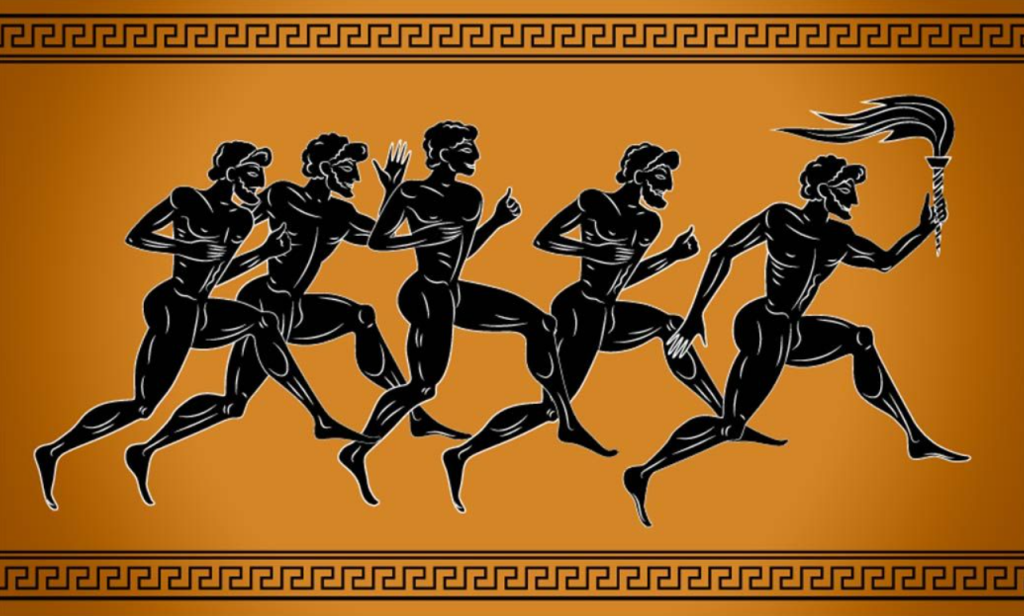
Facts
10 Fascinating Facts About the Ancient Olympics

The Tokyo Olympics held in 2022 were a challenging event due to the devastating impact of the COVID-19 pandemic worldwide. Unlike previous games that saw packed stadiums, the Tokyo Olympics limited public attendance. Nonetheless, the event garnered an impressive global audience with over 64 million streams through the Olympics App alone. While the modern Olympics may overshadow the inaugural event in 776 BCE, learning about the incredible facts of the original Olympics holds great significance today.
First Regular Olympics

Rewritten: The upcoming Olympic games are scheduled for 2024 and typically occur every four years. However, due to the pandemic, the 2020 games were postponed and rescheduled for 2022, disrupting the usual four-year cycle. The next Olympics will resume the normal interval. Have you ever wondered why the games take place every four years? Originally, the Olympic events were exclusive to the aristocrats and were not held regularly. Later, the Greeks established the tradition of holding the games every Olympiad, a four-year period.
First Olympics With an Open Audience

In ancient cultures, previous games were exclusive events only attended by the privileged few, such as kings and aristocrats. Regular citizens were not given the opportunity to participate in the festivities. However, during the 776 BCE Olympics, doors were opened to a larger audience. People began to travel to witness the games. Although the first Olympics were not well-attended, the culture gradually gained popularity, and eventually, tens of thousands from all over the world would travel to attend.
One Athletic Event Olympics

Close your eyes and envision it. Consider the scale of the modern-day Olympics. How many Olympics can you recollect spontaneously? Surely, you can recall more than one. Today’s Olympic Games present us with an array of events that we choose to follow based on our preferences. However, the ancient Greeks did not have such a privilege, particularly in the first Olympic Games. There was only one event in the entire Olympics. Though many other events were subsequently introduced, the first Olympics were limited to the stadion.
The Stadion Race

The origin of the stadion race name comes from the location of the race, which took place inside a stadion. During the first Olympics, this was the only event held. The stadion race was comparable to today’s 200-meter sprint event. The race featured 20 participants who ran a distance of approximately 180 meters. Olympic officials were present at both the starting and finishing points to determine the winner accurately. The few seconds of sprint they marked the climax of the entire Olympic event.
The Olympics Were Held at the Stadion

In ancient times, the stadion was the main venue for the first Olympic games, just as modern Olympics take place in stadiums. People from all over the world would gather in the stadion to witness these quadrennial games. Unlike today’s track and field events, the first Olympics had only one game, which was the stadion race. The race took place on a track in the middle of the stadion, with markings for 20 competitors and designated starting and finishing points.
The Start Gun Was a Trumpet

In modern times, we hear a start gun to begin races, but in the first Olympics, it was marked by a sharp trumpet sound. The pre-race rituals were similar to those of today. Athletes would take their positions at the starting line, and officials would check to ensure no one had an unfair advantage, such as a foot over the line. Once everything was in order, and the audience’s excitement was palpable, another official would shout the Greek equivalent of “on your mark, get set,” and then a loud trumpet would sound to signal the start of the race.
They Started From a Standing Position

The starting position for Olympic races has evolved over time. In today’s Olympics, most races begin with athletes in a crouched position on a launchpad, which provides them with leverage while starting. However, in the ancient stadion race, athletes started while standing with their arms out and ready to run. There was a stone start line to mark the beginning of the race. Over time, the stone start line was improved, and a four-inch groove was carved to allow athletes to launch themselves into the race.
An Olympiad Named After the Winner

The modern-day equivalent of the stadion event would be the 200-meter sprint. Winning such an event today would earn the athlete a gold medal. However, in ancient Greece, the winner of the stadion race received various rewards, including the honor of having the next four-year period named after them. As the Olympics were held every four years, also known as an Olympiad, the winner of the stadion event would have the next Olympiad named after them. Consequently, years were referred to in relation to the winner of the previous Olympic game, which was only the stadion event.
A Rerun Broke a Tie

The Olympic games of ancient times had officials stationed at both the starting line and the finish line of each race. At the end of a race, the officials would determine the winner based on who crossed the finish line first. However, if the race was too close to call, and there was no clear winner, a rerun would be conducted to break the tie. This approach to resolving a tie would be impractical today, as modern athletes often win by incredibly small margins, sometimes even microseconds. Fortunately, modern technology eliminates the need for reruns in such cases.




0 comments